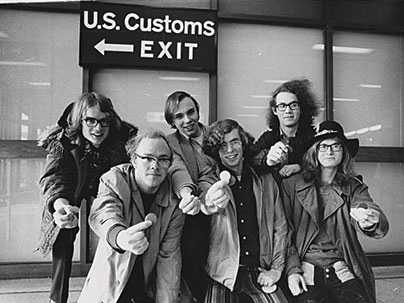The first thing the newly revived MIT Tiddlywinks Association wants people to know about the game of flicking small plastic discs into a cup is that it is not just a game of flicking small plastic discs into a cup.
Instead, according to the North American Tiddlywinks Association's web site, tiddlywinks is a "complex game of strategy and tactics, which involves a fascinating mixture of manual dexterity and intellectual activity as well."
Tiddlywinks started in the late 1800s in England. In 1955, it resurfaced at Cambridge University, where a group of undergraduates were looking for a game to represent their school. Tim Berners-Lee, father of the World Wide Web and recent recipient of the Draper Prize, played tiddlywinks.
The game is played with sets of small, thin discs, known as winks, which are lined up on a mat. Using the larger disc, called the squidger, players pop the smaller discs into flight by snapping one side of the smaller disc with the edge of the larger one.
There are two different versions. The first is the informal child's game in which the small discs are launched into a cup. The formal game is much more complicated with a series of rules and strategies.Â
Yan Wang, president of the MIT Tiddlywinks Association (MITTwA), said that adult players like to compare tiddlywinks to golf, "because it requires physical dexterity in making shots," and also to chess, "because it requires thinking in turns and trying to maximize your strategy based on what your opponent could do." MITTwA is awaiting formal recognition from MIT's Association of Student Activities.
MIT has a bright tiddlywinks history, beginning when the game spread across the Atlantic from Britain during the 1960s. "Although tiddlywinks was formalized in England, the dominant team throughout the 1960s through 1980s was MIT," said Wang. "There was much intercollegiate play with Harvard and Cornell, in addition to international trips to visit Cambridge and Oxford."Â
In recent years, the game had fallen out of favor at MIT because not enough effort was devoted to bringing in new players, Wang explained.
MITTwA, which was reborn this past September thanks to Wang, is hoping to change that with an Independent Activities Period (IAP) "Introduction to Tiddlywinks" that starts on Jan. 10 and ends on Jan. 12, each evening from 4:30 to 6 p.m. in Room 4-145.
Members of the MITTwA who have been playing the game for years will teach the class. On Jan. 13 and 14 from 9 a.m. to 4 p.m., the MITTwA will be holding a tournament for novices and more advanced players alike in the Student Center (W20).
"The tournament will hopefully attract students, staff and faculty who are eager to learn about this piece of MIT history and take part in it. There will be significant attendance by alumni from across the country who all look forward to reviving this part of their student experience," Wang said.
For more information, please visit student.mit.edu/searchiap/iap-7491.html.
A version of this article appeared in MIT Tech Talk on January 10, 2007 (download PDF).







